WINNING Practices for Your Art Business: If You Aren't Doing These Things You are Wasting Time and Energy
So, You Make Art, and Now You Want To Make Money Too
If you want to get started in the art business from the ground, or even just improve a plan you have already started then here are some things you should consider. Art is difficult, selling art is more difficult, and managing an art business is even more difficult. It isn’t great money especially for the first long while, but if you know it is what you want then there are some things I would suggest you do to get started.
We are going to talk about the proper mind set, goal setting, sacrifice, presentation, trust, pricing, audience, location, being visible, and making it through a drought. I would have liked to covered these all in a little more depth, but since this article is already about 6,000 words I decided to leave it as an overview and expand on these topics individually at another time. So here we go
The Proper Mind
Cultivate a strong desire to succeed and a clear idea of what exactly that success looks like. Really visualize and believe in your vision and ability. I believe 60% of failure is from doubt and the other 40% is from failure to visualize. Some people might say, “What about unforeseen forces?” That falls under the category of failure to visualize. Craft your vision and believe in it. Allow room for new data and make adjustments. My mantra for success has always been ATTACK, EVALUATE, ADJUST, ATTACK.
Doubt is a Liar and Needs to Shut its Mouth!
Tribal Doubt
Doubt will come at you from all angles. You might even find that people you thought had faith in you all along really don't, but that is ok, because guess what? Their approval pretty much has no effect on your success. The only thing that will is how you feel about their approval or lack thereof.
Your friends are going to doubt you. Your family is going to doubt you. They are going to say dumb stuff like, "I just want what's best for you." or, "I'm just looking out for you." , and they honestly believe that placing doubt in your path is the best way to do that. To deter you from walking your path because of their own fears. They don't even think about how miserable you might be living a life meant for someone else. Still there is no need to worry.
Once you file the opinions of others where they belong, and realize that you are the one that will have to live with the consequences of your actions it is easy to see what you need to do. If you give up your ambitions to go be miserable in another occupation you have to live with that. The people that want you to give up on your dreams will feel no regret about you not living up to the potential of your dreams, but you are likely to.
Here is how I look at that: When I am working on a piece of art I can see not just what is on the canvas, but what will be on the canvas, where the process is headed. The spectators only see that what is on the canvas isn't really anything worthwhile. They see all things that need to be fixed, and the reasons it won't do well. The are only seeing what is, not what will be. In short, they have no vision. So don't let other's lack of vision introduce unjust doubt into your world. When others were, and still are doubting me the thought that comes to mind most often is a quote from Nietzsche "And those who were seen dancing were thought to be insane by those that could not hear the music."
Circumstantial Doubt
Don't let short term failures discourage from seeing and pursuing the bigger picture. Success in art is much like success in anything else; it takes consistent action over a long period of time. Failure is just a step on the staircase of success. If you know how to properly fail and learn from the experience instead of letting that one experience create doubt in your ability then you have already achieved one of the most important things.
Visualize to Win The Prize

The desire to succeed and a clear vision of what that success looks like is very important. So first you need to be open and honest with yourself about exactly what it is you want. You pretty much need to clarify your destination and then plan a route to get there. Everything starts with thought, with visualization. So..... What do you want? When do you want it? How do you get it?
Answer these questions honestly and realistically and you have a road map, but this road map isn't quite as concrete as a physical map. Most times it is more like a river, constantly changing. Your understanding of what you want and how to get it will be constantly changing even if it is only in the slightest ways.
Rock Solid Lesson
I used to collect rocks. Not like fancy rocks that you buy at the store, but rocks that you find at the river or creek while fishing or in the mountains hiking, things that caught my eye. It probably seemed really stupid to others, especially since, to most people, they just looked like plain old boring rocks. To me they all had their own unique character. The told a story, produced a vibe.
Anyway, it was a pretty common occurrence for a rock in the distance to catch my eye, and as I walked over and picked it up I would find an even more interesting rock underneath it or on the way over to it. So by the time I got to the rock I was seeking, I was no longer very interested in it, but if it hadn't caught my eye in the first place and led me in that direction I never would have found the better rock. Life, goals, and opportunities are the same way.
The point being that sticking with a plan has its benefits, but you have to be flexible and adaptable, and you will find even better opportunities than the ones you set out after. That is why I say ATTACK, EVALUATE, ADJUST, ATTACK. Constantly refresh your feed and look to see if the plan you had set out is still the best. You wouldn't want to operate off of an outdated map, and trust me you don't want to work from a plan that isn't up to date with your most recent version of goals or opportunities. It needs to be constantly refreshed like your news feed. So that sounds good right, but how and where do you start?
Sit down and ask yourself; what is it that I want from my life? What do I want my day to look like? How would I like to be financially rewarded for my efforts? When you answer those questions then you start plotting a course. Break it down into chunks and attack those chunks. Divide your goals into short term and long term goals. When you see what you want and how far you currently are from that it can be discouraging. That is why you just focus on taking steps and stop worrying about whether you will get there, or if you efforts will make a difference. Have faith in works, and keep working.
Mind maps are an excellent way to not only record your ideas and understanding of what it takes to reach your goals, but also to better structure these concepts. It is a very easy process which I won't go over much here since there are tons of resources. Creating lists of tasks that need to be done in order to create the subsets of goals will make these not seem so difficult to reach the main goal.
This is Going to Be Hard Work No Matter How Talented You Are
I'm not certain I put any faith in the "law of attraction", but I do know that when you have the right thought, and you know what it is that you want, and have a general idea of how you might go about getting, and you are done making excuses for why you can't do something then you start to see the opportunities to get all of the things you desire. If you are persistent you will have them. That I know for sure.
Keep in mind, if you really want to do this you are going to have to be patient. It takes time and a lot effort to build a system that works, a list of clients, and a reputation. You can bust your ass seriously pursuing art as a career for years before you start to attract consistent interest from people who want pay for your work. There is so much to consider and manage. Unfortunately most of my time isn’t actually spent making art. It is spent doing everything else it takes to run an art business. That is not to say there aren't loads of long days and nights in the studio; there just seems to be more time spent developing interest in my work.
Make Excuses or Make it Happen
You have to make sure and carve out the time and space for your creativity to play out. You have to make time to make art, not find it, make it.. It will take sacrifices. It is all about priorities. What are you willing to give up in order to make these things happen? If the answer is nothing then you don't really want to achieve your goal. Regardless of what you say or believe, I am telling you right now, IF YOU AREN'T WILLING TO SACRIFICE ANYTHING YOU DON'T REALLY WANT TO MAKE IT HAPPEN.
It's up to you and nobody else. If you are complaining about not having the time to accomplish what it is you need to make you successful, but you are spending hours and hours watching TV, going out to party with friends, scrolling through social media or other expendable activities then you don't want to make it happen; you want to make excuses.
If you are complaining that you don't have a studio so you can't make art then you aren't looking at what is available to you. Like Roosevelt said, "Do what you can, with what you have, where you are." There are a lot of options if you only think creatively. After all you are an artist. Isn't that what you do?
If you are complaining about not having the money to invest in your success, but you are spending it going out partying, buying alcohol/tobacco/drugs, buying superficial things keeping up with the Jones's, or gambling then you don't want to make it happen. You can make excuses, or you can make it happen.
Perception of Art in the General Public
Another harsh truth about pursuing a career in art is the all encompassing catch 22. Art opportunities are like getting a loan. The bank only loans money to people that already have money. This same way the world mostly gives opportunities to succeed to people that already have some success or at least appear to.
One of the biggest reasons it is difficult to get going in the art industry seems to be people’s feelings as to where art fits in their lives specifically. There seems to be the general notion that artists just like to make art for fun and want to be paid in exposure. A lot of others think that they should be able to purchase original art for the price of a Walmart poster. Get the hell away from these people. The right people will pay you what you are worth. THE RIGHT PEOPLE WILL PAY YOU WHAT YOU ARE WORTH.
Know Your Audience To Grow Your Audience

You want to find the right audience for your art. This will be one of your major initial hurdles. Do not fall into the exposure trap. If you want to make a living then people need to understand that they need to pay you in actual money. First you need to really think about the reason you are considering it in the first place. If it is to make a load of money then I would say your efforts are probably better used elsewhere. You can take the same amount of time and effort and apply it to something else to get better results much quicker. However you do need to make money. There are a lot of expenses involved in making art.
Making the Most of Your Efforts. Pick the Low Hanging Fruit.
So if you have a product is it a more efficient use of your resources to blast it out generally or is it better to show it to those who are most likely to be interested in it already? Find your ideal audience. How do you do that? Well one way to start is to look at the work you do. What is the common denominator? Do you paint portraits? Landscapes? Pets? Abstract? Well who is interested in those things. Find those people. If you only paint Dark Horror type painting you probably aren't going to advertise people who likely want art of fruit baskets. If you only draw caricatures of people then you probably aren't going to seek out people who are only interested in landscapes to hire you. Who is it that is already interested in things similar to what you are doing? That is your low hanging fruit. Pick it.
As you are reaching out to your audience you also have to think of their income, their ability to pay you for your work. It probably wouldn't make as much sense to spend money time or money to advertise paintings that cost $1000 to people that only ever have $50 of disposable income as it would to advertise to people that could easily afford it.
Find your niche and find the people that are interested in it and have the money to pay you for your craft. If you aren't sure how much to charge then keep on reading. That is also covered here.
You Have To Make Solid Content
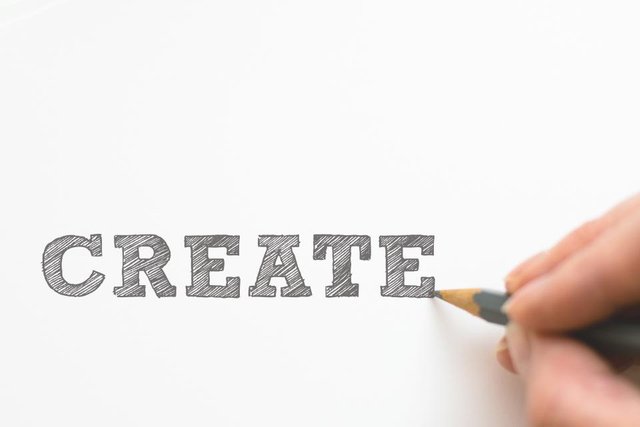
One of the absolutely most important parts is that you need to produce great work. Create, Create, Create as often as you can. You want to always be improving your technical abilities and expanding your horizons. One of your first goals should be producing a solid body of work. As soon as you are able, you want to put together a portfolio of your best work, maybe in a few different styles or mediums, because when you start letting people know that you are taking commissions and selling artwork they are going to want to see some examples. People don't know the possibilities of what you can do until you show them.
Let people know you are for hire, show them what you can do and let them know why they should hire you instead of someone else. Really, think about it; If you wanted to hire someone to do some type of project for you then you would want to know what they have done previously.
You would want to know that they had done this type of work for others before, but if they had no "official" experience you would at least want to know that they had the technical skills required to do so. You making art is not much different. Ideally you could show a potential client work you have done for others in the past, but if you don't have that there is no need to worry. You just need to show them that you have the technical skills required to accomplish the task, and build enough interest and trust for them to be comfortable hiring you.
Keep in mind it isn't like you belong to some franchise where you have trust built over years, maybe even generations, from having good standards and practices. Fast food might not be the best example, but here it goes anyway, You don't buy burgers from Johnny at Burger King because you trust Johnny. You have faith in Burger King's practice and standards and their general consistency of value from location to location. In other words with a Franchise you know mostly what you are getting regardless of who the employee is giving it to you
You as a Freelancer are not going to have that type of backing from a huge time tested company. You will have your craft, your presentation, your communication skills, and your customer service. You need to keep in mind that there are hundreds of thousands, if not millions, of people who make art. It is a highly competitive profession. You need to stand out. Create work that is unique, whether it is visually unique, above par, conceptually unique, or have some cutting edge technique.
Presentation Builds Trust

Presentation is everything. I am not saying you need to wear a suit and tie or any of that, but you need to employ the same idea. You want to develop an image that makes it easy for people to trust you. You need to present yourself, your work, and your business in a manner that doesn't leave room for doubt.
People have a lasting impression of you within about the first 15 seconds, make that count. You need to be able to give people these things: What you do, where they can find your work, how to get in contact with you, and where they can purchase your work. Also preferably you can direct them somewhere they can see what previous clients are saying like a fan page or a website.
Make Your Work Shine
Whether you start with a simple digital portfolio that is just on your phone,social media, or a website you need to make it look professional. Learn how to properly photograph and present your work. Really this is very important. It is all about branding. This will really improve your close percentage.
If you have the money to purchase a professional camera I would say do it. It will really improve your ability to present your art the way that it actually looks. If your portfolio is strictly digital and you don’t plan on moving to print then you might be able to get away with using your phone for now, but an actual professional camera will be much better. I might make a post on this later on.
They key is not just to photograph them, but to make them eye catching. Cropping the photos of your art to take up the whole space is important in most portfolio situations. Maybe even doing a little digital touch-up to ensure that the colors in the photo of your artwork match the actual art.
Many Hats To Wear
Again, as an artist it is about more than just being able to make art. You have to be a creator, a marketer, a salesman, entertainer, and businessman . You can make great art all day, but if you aren't getting it in front of the right people it is just going to stack up in your room or studio. You can market it, but really learning how to sell it will get you a lot more commissions than simply putting it out into the atmosphere without pursuing leads. If you don’t make solid business decisions then even doing some of these other things right will still leave you in the negative.
When I first decided I wanted to get serious about creating and selling art I had a poor attitude. I just wanted to live in my own little creative bubble, produce stuff, and expected that people should buy it because it was of decent caliber. I wanted to be in the studio working on exploration and creative problem solving. It didn't really take me too long to realize that with that attitude I was going to starve to death.
I realized that if i really wanted to make art for a living and not just be some type of deluded creative purist then I had to make some changes, and apply the same techniques that allowed me to manage other types of business to my art practices. Be real with yourself.
Legitimate Business Hand out Business Cards
Back to presentation, people are going to want to get in touch with you once they have taken interest in your work, and what better way to show them all the ways to reach out while also adding that feeling of trust and legitimacy than by handing them a nice business card. Trust is important. You are going to want people to pay you at least a down-payment before you start the artwork; so they need to feel you can be trusted not to abscond with their money. A business card is a nice token of trust, especially if it leads them to an official website or a place where they can see what others are saying about you. My close rate on commissions dramatically improved once I made and started handing out business cards to everyone I talked to about my art.
Create a Pricing System That Works For You

Before you really start approaching people you are going to want to do some thinking ahead of time about what you will charge them. I see a lot of posts in art groups with people asking how much to charge for their work. There isn't simply a formula that is going to work for everybody. Everyone is at a different stage, and there are many different approaches. Some people charge by size, some people charge by time and supplies, and some people just pull a number out of their ass.
The thing to do is create a pricing system that works for you and your operation, and then put your work in front of the customers that fit into it. You don't want to lose money every time just to make a sale. The only time you should be working to give something away is if you are producing art for a charity event. (or some promotional giveaway)
Track Your Expenses of Time and Money
What I would suggest is to start tracking your expenses and time for every piece of art you make. Then you will begin to get an idea of what it is actually taking you to make a piece of art, and that is a good place to start with price. Once you know about what your cost is in dollars and time for a certain medium and size and you figure out what you think your time is worth, that is where you start. It will also make it much easier to give someone a quote when they ask what you will charge for something. Until you are sure you are covering those expenses you are really just giving it away.
You Are In Business. Think Like a Business
You really need to get in the habit of thinking like a business and not just as a creative. I know there are loads of artists out there that might consider that selling out. They can think that if it works for them. That is exactly the attitude that leads to being a starving artist for most. The way I view pricing my art is that I am a business not an individual. So I view the expenses of supplies and payroll considering myself to be an employee of my own business. So pricing doesn't just include supplies and my time, but also trying to turn a profit.
Lets say the supplies for a project cost $100, the project takes me 50 hours, and my time is worth $20 an hour. Multiplying the cost of supplies by 2 really gives you a truer sense of what acquiring the supplies cost between the time it took to acquire them, to any fuel used, or any shipping, or other indirect costs added to the money you spent. So then you have a formula that looks like this ($100 X 2) + (50hours X $20 per hour) = $1,200
You might think, "Alright I made $1,200." , but in a business sense you really just broke even on the project as a business owner. Your time was paid for and the supplies were paid for but you didn't actually turn a profit. So, to that formula, you add your desired profit margin and get your price. Say your goal is to make 20% profit on that project. So you have $1,200 X 0.2 = $240, add that $240 to your $1,200 and you get a price of $1,440. So everything is paid for, and you made a 20%profit. Look at you go.
In the beginning you probably aren't going to be able to charge a nice hourly wage or even consider a profit margin. You will probably be lucky to get your supplies and some of your time paid for, but that is the type of mindset you need to work toward to be a profitable artist. To start I would suggest keeping your prices low enough that you can sell a lot of art in the beginning. That will allow you to spread the word quickly.
Location, Location, Location
Location and current market really play a big role in price. If you are in the wrong location you won’t get paid what you are worth. If you are in the right location, but in front of the wrong people you won’t get paid what you are worth. I moved 400 miles south and suddenly I went from people telling me I was way overpriced to telling me I was severely under priced. Location matters. It doesn’t matter as much if you already have a good presence online with a huge following, but it still matters.
Balance
Start getting your work and your name out there and letting word of mouth do a lot of your marketing for you. As you become more well known/desirable/confident begin raising your prices. There is a balance you will have to feel out for yourself. You don’t want to start too low or people won’t value your work. Start too high and you will have trouble finding people to buy. If your work is flying out the door consider raising the prices.
Again, there are multiple strategies to pricing your work; some might want to start really high and develop hype around their work, which can be successful if you get out in front of the right market. Others want it to be available to everyone at low cost which is a strategy that might work if you can keep customers flowing and your type of work doesn’t have very high expenses of time or money.
Whatever your pricing strategy is make sure that you always state your price with confidence. If you sound uncertain when you name your price the potential client is definitely going to feel uncertain about your value and the value of your work.
Be Visible. Out of Sight Out of Mind
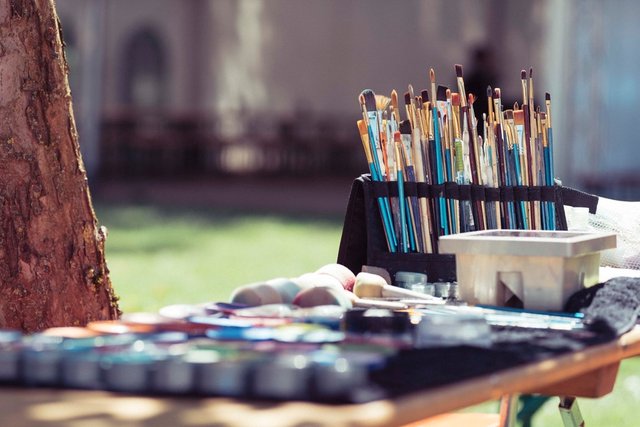
Be Visible
Another question I hear a lot is how to get people interested in commissioning you. Aside from what I have already been talking about hear with solid content, building brand trust, and having good customer service, another important factor is to constantly be visible and building interest in what it is you are doing. You have to get out there and start kissing hands and shaking babies.....or something like that.
Most of my commissions come after someone has watched me paint live on social media or seen me doing art in the community. BE VISIBLE! When you are out in the community doing something that people don’t generally see everyday they get interested. Watch for signs of interest, and pull people in to get them invested in some way, even if their investment is just a few moments time.
Being visible in the community can be a number of things. You can have your art in shops or galleries. You can be involved in Festivals or other events. You can be out at the park doing work. I have got several commissions simply from spraying fixative on drawings or spray painting in my apartment parking lot from time to time.
Be Approachable
Make yourself approachable. If you are out in your community at an event or just simply hanging out at the park making art you should set yourself up in a way that people feel comfortable approaching you. What I mean by that is if you are set up painting or drawing, and you and your pitbull are listening to Black Metal and mean mugging everyone, then people probably aren’t going to stop and say hi, or see what you are about. They might observe from afar like an animal at the zoo and maybe even record you with their phone, but the odds are that it won’t develop into any leads or new relationships.
So smile, acknowledge people, say hi, start a conversation and see what happens. This is a great time to hand out those business cards I was talking about and discussing what it is you do and even what you would like to do. You never know who someone is and they might take an interest in you, and have to perfect opportunity to help you take the next step in your career.
Go Live
Live Videos or really any content that allows people to see the behind the scenes of being an artist are great advertisement. People love getting to peek into that world. You might really be surprised. Things that you as an artist might find mundane or unimportant about the process might be something that really fascinates people. Your audience, all day long, sees finished pieces in galleries and online. Give them a glance at the behind the scenes magic, and you might find that they want to get involved in what you have going on.
Build hype around your live videos. If you know in advance that you are going to go live then put that out there. Let people know when you are going to go live, and give them a general idea of what you will be doing. Don't forget to post your time zone. If you are like me then you have fans stretched all over the place. Most of us do. So give them all a chance to set some time aside to join you. You will have a lot more people tune in. Also encourage people to share your video by simply asking or maybe even offering some incentive to do so.
Don't Let a Drought Starve You Out

There are times when business is better than others. You will have times when you are so swamped you will wonder if you can meet all the deadlines. Then there will be times when you have to wonder if you are being boycotted or something of the like. How are you going to handle the drought?
The best way to get through a drought is to have multiple streams of income. What those streams of income look like will have a lot to do with your goals and skills specifically. Maybe you pick up a part time job. Maybe you teach workshops. Maybe you offer lessons. Maybe you write a blog. There are loads of options out there. Maybe you are good at advertising and offer your service there. If you like the freelance gig then you just need to find a way to monetize your skills. This is what will get you through the dark times. So start thinking about how you can add more streams of income to your business plan
Customer Service
Anyway moving on. So you have built a portfolio, tracked your expenses of time and money, and now you have a pricing formula that is starting to work for you. What now? You have to focus on growing that client list, and the easiest way to do that is to make sure that all of your clients are pleased with the artwork that you make for them and the experience of commissioning art.
There is a saying that I picked up when I first got into sales, and that is, “It is easier to keep a customer than to get a new one.” This is so true. Customer acquisition is one of the most expensive things in any business. What that really means is by treating your customers right and making them feel good about your exchanges by giving more value than you ask in return will win you customers for the long haul time and time again. However, going out and finding new customers through advertising, following leads, or doing events cost a lot of time and money.
If your client base isn’t satisfied with your interactions then they aren’t going to stick around, they aren’t going to spend more money with you, and even worse they are probably going to tell people they know not to do business with you. You want your clients out there spreading the good word creating an army of supporters and potential clients, not sabotaging all of your growth efforts. So as you pick up new clients you have got to treat them right to place them on your team of supporters. You can see some more about good customer service and improving the commissioning process in one of my recent posts As an Artist How to Improve the Commission Process For You and Your Clients
There is all of that, and I don’t want to even talk about the logistics of shipping, especially internationally. At least not today.
So as an overview you have to cultivate a strong desire to succeed, create a clear vision of what that success looks like, create a solid body of work, begin building up a brand, create a pricing system, make yourself available to contact, be visible, find potential customers, impress them with your work, make a connection with them, earn their trust, follow up on leads, build relationships, create work for them in a way that leaves them satisfied with the experience and product, give them more value than you ask in return, and just keep building your customer base.
This just the general overview of the most basic aspects of becoming successful as an artist through good business practices. Did you notice how most of this had nothing to do with actually creating artwork? (you still need to make great art) So in short, yes making a living through art is difficult even when making art isn’t. So my suggestion is to have an honest conversation with yourself about why you were interested in the first place.
Another Lengthy Post. So Here is a Recap
- Regardless of your feelings Art is a business
- You have to be an Artist, salesman, marketer, and entertainer
- Visualize your ideal scenario for the future of your art business
- Set goals and divide them into more manageable chunks
- Be adaptable to new information, understanding, and new opportunities
- ATTACK, EVALUATE, ADJUST, ATTACK
- Don't succumb to the fears of others or depend on their approval
- Don't let failure stop you. You don't let the first step in a staircase.
- There are main causes of failure: Doubt, Failure to Visualize (Excuses fall under doubt)
- You can make it happen or you can make excuses
- Carve out the time and space for your creativity
- Get comfortable with sacrifice
- Be persistent and patient
- Cultivate an image that builds trust
- Create a Portfolio, a place where people can see your work
- Create a shop, a place where people can buy your work
- Track your expenses so you can minimize them where possible as well get paid accordingly
- Devlelop a pricing system and name your price with confidence
- Create Business cards that add legitimacy and give people multiple ways to contact you
- Find your ideal audience and spend the bulk of your advertising efforts there
- Have Great Customer Service. It is easier to keep a customer than to gain a new one
- Be visible and approachable
- Your location matters
- Cultivate multiple streams of income to survive the dark times
All images are linked to their source. Also, I'm sorry if this post seems unedited. I just wrote it on the fly, and it is basically a rough draft for a larger resource I am working on for artists. Please Comment with any feedback or questions. If you found this of value then upvote and/or resteem. If these posts actually start making legitimate money then I will probably just offer the final and revised product to everyone here for free.
Don't Forget to Checkout My Huge End of the Year Sale
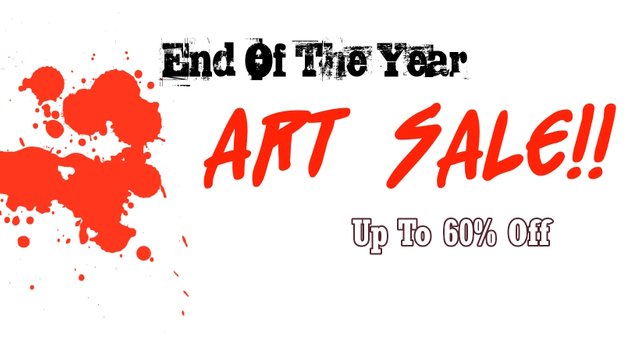
If you enjoyed this post I hope you upvote, resteem, and follow me. Comment with any insights, suggestions, questions, or complaints.
As An Artist How to Improve the Commission Process For You and Your Clients
You Get What You Pay For- How To Get The Most
Latest Commission- Charcoal Drawing
Latest Commission In the end of the Year Art Sale. See How Much You Can Save
Pelicans in the Sun- A Photo Series Of Last Night's Sunset
GREAT NEWS!!! Huge End of the Year Art Sale, and I am now accepting Steem and Steem Dollars
Portrait Painting Tutorial- A Walk-through of the "Cereal Killer" Oil Painting Series
Sketching on the Graveyard Shift- A Collection of Portrait Sketches
Photo Realism- Why I Am Done Simply "Recording" Images
Fluid Paintings Round 3 (with video)
W.I.P.- Oil Paint Portrait I am Working On
Migraine Madness- A Series of Oil Paintings Portraying Migraines
Fluid Paintings Round 2 (With Video)
Abstract Explosionism- Painting With Guns (With Video)
Fluid Paintings Round 1 (With Video)
Picking the Best Photo for Your Portrait Painting
 |
 |
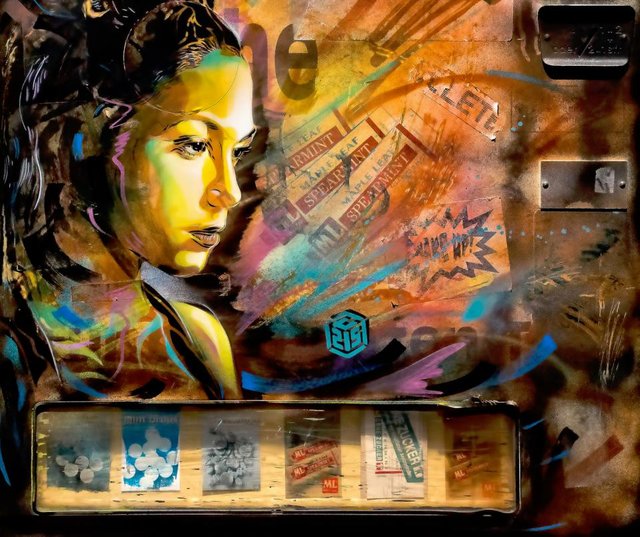


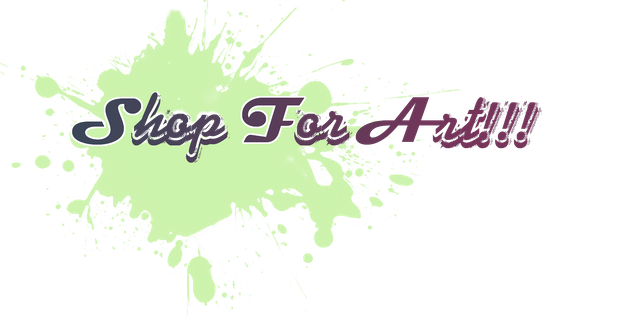

Wow man, what an article ;-)
Thanks buddy.
Very thorough, you could have perhaps made several articles out this.
Yeah that probably would have made it a little easier, but if I would have done that I would have just felt like I was stretching material. One thing I really dislike about some TV series is when they take an episode worth of material and make an entire season out of it. So I just figured I would pack it all in there. There will be more to talk about. lol
Just my observation of $uccessful account$ on $teemit. ;-)
Keep the posts coming.
Thanks. I appreciate the feedback.